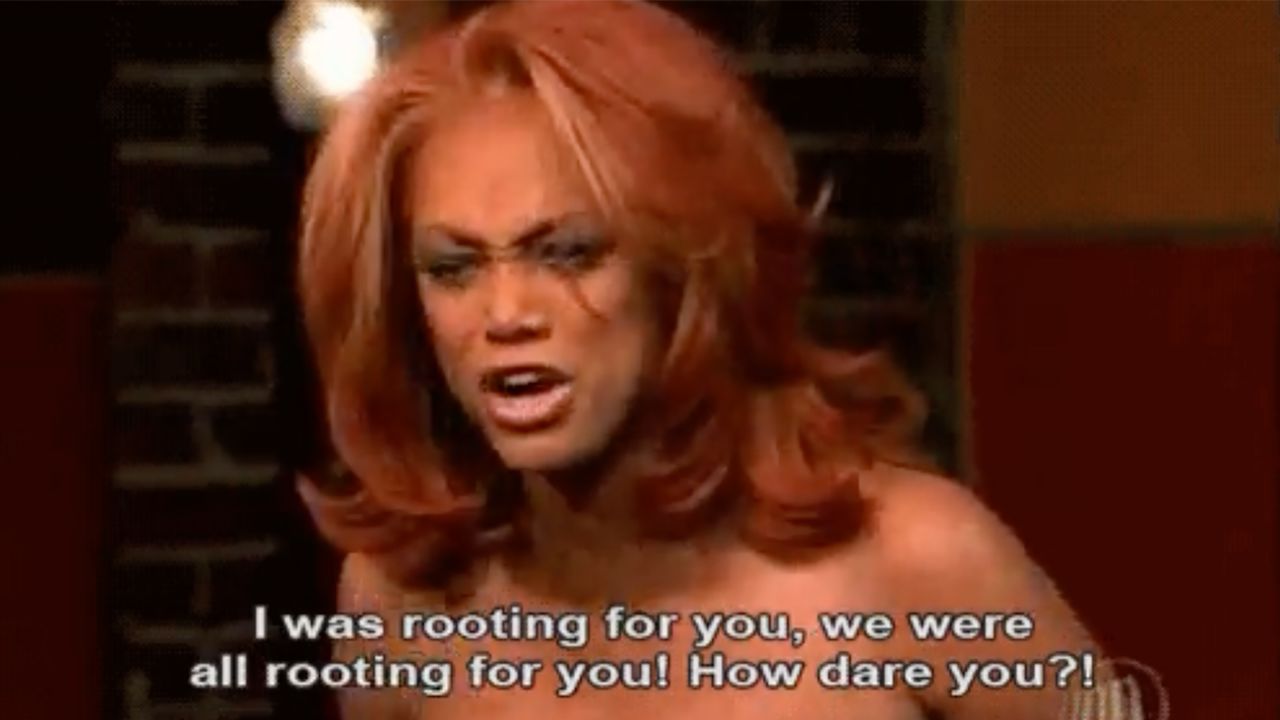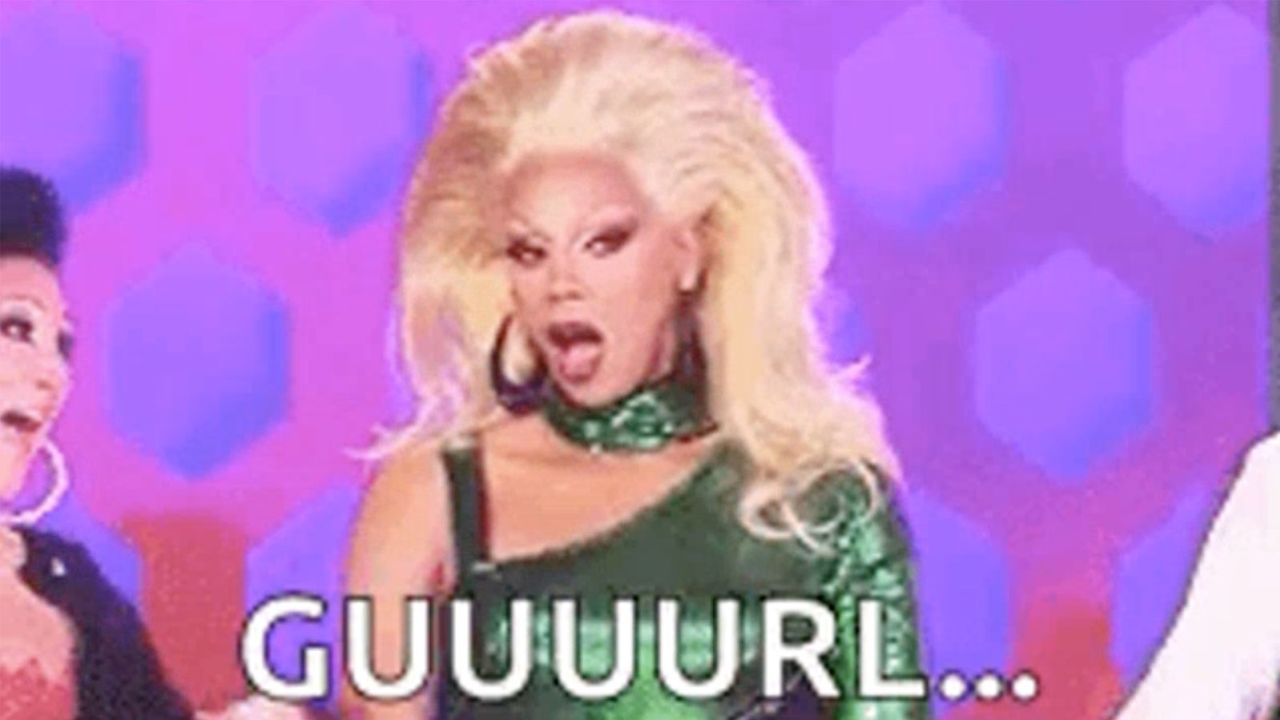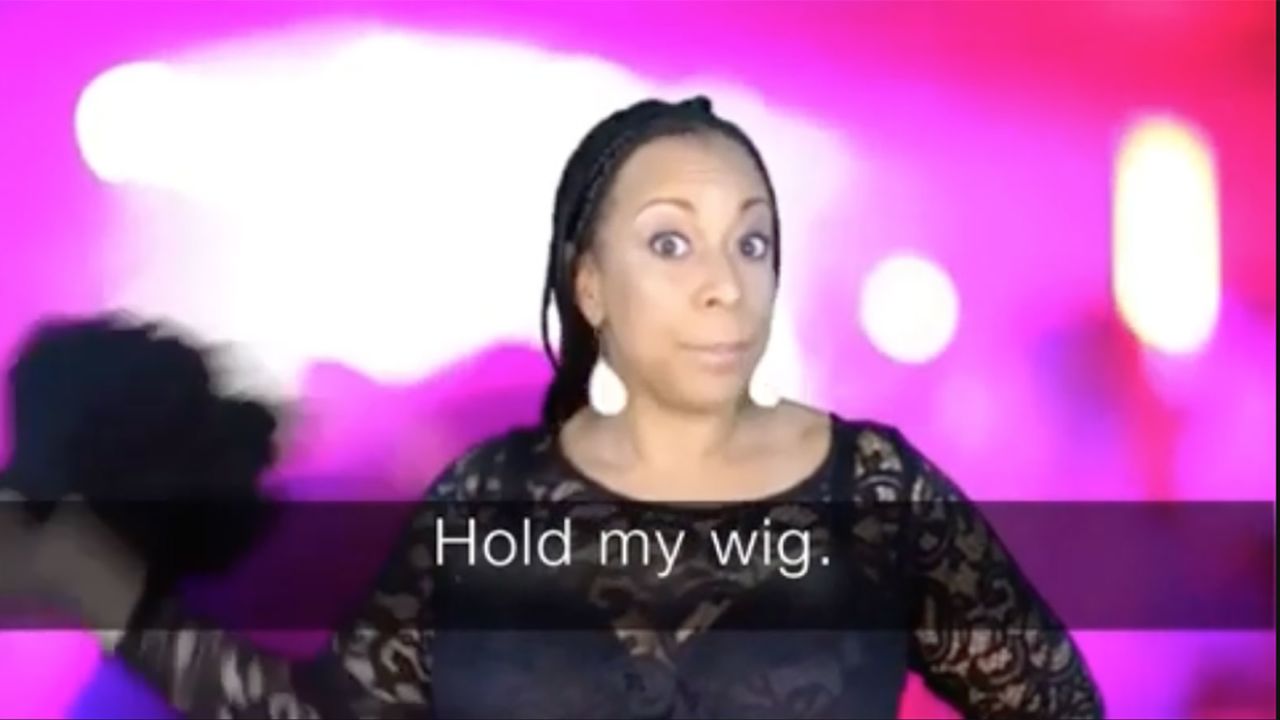consider the source .. CNN.
What’s ‘digital blackface?’ And why is it wrong when White people use it?
https://www.cnn.com/2023/03/26/us/di...cec/index.html
Analysis by
John Blake, CNN
Updated 7:56 AM EDT, Sun March 26, 2023

Kimberly "Sweet Brown" Wilkins became a meme after a news clip of her being interviewed in 2012 by CNN affiliate KFOR took the internet by storm.
KFRO
CNN — Maybe you shared that viral video of
Kimberly “Sweet Brown” Wilkins telling a reporter after narrowly escaping an apartment fire, “Ain’t nobody got time for that!”
Perhaps you posted that meme of supermodel Tyra Banks
exploding in anger on “America’s Next Top Model” (“I was rooting for you! We were all rooting for you!”). Or maybe you’ve simply posted popular GIFs, such as the one of NBA great
Michael Jordan crying, or of drag queen
RuPaul declaring, “Guuuurl…”
If you’re Black and you’ve shared such images online, you get a pass. But if you’re White, you may have inadvertently perpetuated one of the most insidious forms of contemporary racism.
You may be wearing “digital blackface.”
What is digital blackface?
Digital blackface is a practice where White people co-opt online expressions of Black imagery, slang, catchphrases or culture to convey comic relief or express emotions.
These expressions, what one commentator calls
racialized reactions, are mainstays in Twitter feeds, TikTok videos and Instagram reels, and are among the most popular Internet memes.
Digital blackface involves White people play-acting at being Black, says
Lauren Michele Jackson, an author and cultural critic, in an
essay for Teen Vogue. Jackson says the Internet thrives on White people laughing at exaggerated displays of Blackness, reflecting a tendency among some to see “Black people as walking hyperbole.”

This Tyra Banks moment from "America's Next Top Model" in 2005 became an enduring meme.From CBS Television Distribution
If you’re still not sure how to define digital blackface, Jackson offers a guide. She says it “includes displays of emotion stereotyped as excessive: so happy, so sassy, so ghetto, so loud… our dial is on 10 all the time — rarely are black characters afforded subtle traits or feelings.”
Many White people choose images of Black people when it comes to expressing exaggerated emotions on social media – a burden that Black people didn’t ask for, she says.
“We are your sass, your nonchalance, your fury, your delight, your annoyance, your happy dance, your diva, your shade, your ‘yaas’ moments,” Jackson writes. “The weight of reaction GIFing, period, rests on our shoulders.”
Why digital blackface is wrong
Some may say posting a video of Sweet Brown saying, “Oh Lord Jesus, it’s a fire” is just for laughs. Why overthink it? Why give people yet another excuse for labeling White people racists for the most innocuous behaviors?
But critics say digital blackface is wrong because it’s a modern-day repackaging of
minstrel shows, a racist form of entertainment popular in the 19th century. That’s when White actors, faces darkened with
burnt cork, entertained audiences by playing Black characters as bumbling, happy-go-lucky simpletons. That practice continued in the 20th century on hit radio shows such as
“Amos ‘n’ Andy.”

RuPaul's colorful reactions on his reality TV series, "RuPaul's Drag Race," have spawned many memes.From World of Wonder
Put simply: digital blackface is 21st-century minstrelsy.
“Historical blackface has never truly ended, and Americans have yet to actively confront their racist past to this day,”
Erinn Wong writes in an academic paper on the topic.
“In fact, minstrel blackface has emerged into even more subtle forms of racism that are now glorified all over the Internet.”
Wong says that digital blackface is wrong because it “culturally appropriates the language and expressions of black people for entertainment, while dismissing the severity of everyday instances of racism black people encounter, such as police brutality, job discrimination, and educational inequity.”
Defining digital blackface isn’t easy
In trying to define digital blackface, it depends on who you talk to. The standard for some is comparable to what one Supreme Court Justice once
said when asked his test for pornography: “I know it when I see it.”
This guidance might help: If a White person shares an image online that perpetuates stereotypes of Black people as loud, dumb, hyperviolent or hypersexual, they’ve entered digital blackface territory.
And yet even with that definition, it’s hard to figure out exactly what is and isn’t digital blackface.
This is the challenge that
Elizabeth Halford faces.
Halford, a brand designer, wrote an
apologetic essay in 2020 about how she made a meme out of Wilkins’ “Ain’t nobody got time for that” catchphrase and sent someone a GIF of the singer
Beyonce repeating, “I’m not bossy, I’m the boss.”
“I’ve engaged in digital blackface,” Halford wrote.” I’ve laughed at people of color on the news facing horrifying crime and disaster and loss. I’ve appropriated Black trauma as punchlines and peeled their faces off to put on my own and say what I can’t say, to make you laugh, or just because it went viral.”

Comedian Holly Logan has helped popularize the "hold my wig" meme.From Holly Logan
Halford tells CNN she was bothered that she overlooked the context of Sweet Brown’s interview. The woman had just experienced a tragedy.
“I guess we find it funny, the way (Black) people tell their story with so much flair,” she says. “but at the end of the day, one woman’s apartment building burned down while she was in bed.”
But Halford says that doesn’t mean she won’t use any more GIFs of Black people. She doesn’t object to the Beyonce “I’m the boss” meme because she thinks it empowers women. She says that as long as a meme or GIF “is empowering and not demeaning” she feels free to use it.
Besides, Halford says, if she refrains from using any Black memes, she runs into another problem:
“Those are the most effective, because White people are so boring,” she says.
Jackson, in her Vogue essay, acknowledges it can be hard to know where to draw the line.
“Now, I’m not suggesting that white and nonblack people refrain from ever circulating a black person’s image for amusement or otherwise…” she writes. “There’s no prescriptive or proscriptive step-by-step rulebook to follow, nobody’s coming to take GIFs away.”
But no digital behavior exists in a deracialized vacuum, she says. A White person can spread digital blackface without malicious intent.
“Digital blackface does not describe intent, but an act — the act of inhabiting a black persona,” she adds. “Employing digital technology to co-opt a perceived cache or black cool, too, involves playacting blackness in a minstrel-like tradition.
“No matter how brief the performance or playful the intent, summoning black images to play types means pirouetting on over 150 years of American blackface tradition.”
So whatever happened to Sweet Brown?
Another challenge with defining digital blackface is that some of the alleged victims of the practice might chafe at being labeled casualties of racism.
Consider what happened to the woman now known as Sweet Brown after she went viral. She
hired an agent and
appeared on “The View” and “
Jimmy Kimmel Live.” An
Auto-Tuned version of her original video now has at least 22 million views.
Sweet Brown did go public with accusations that she had been exploited. But it had little to do with her race.
